I know
throw new Exception();
has a pretty large overhead, since it creates a full stackTrace, etc.
Does
throw new Throwable();
present the same problem? Is this behaviour inherited, or does throwing a Throwable has a smaller (o no) overhead?
EDIT
From an analyst point of view, a user inserting wrong password is an exception to the normal execution order of a program. So if I have:
public Session newSession() {
validate_user_and_password();
}
throwing a UserNotValidException would sound correct from an analysts point of view.
Returning null or 0 just sounds incorrect if your code has pretty good abstraction. I just wanted to know if I could actually implement this in code, or if I'd have to just leave it to theory.
There's a good difference between programming-point-of-view exception and analyst-point-of-view exception.
Note: I've given a really simple and silly example, this is not quite my case.
Note 2: I know returning null would be the ordinary thing, but I'm required to have properly abstracted and OO code, and, personally, I see no harm in this.
